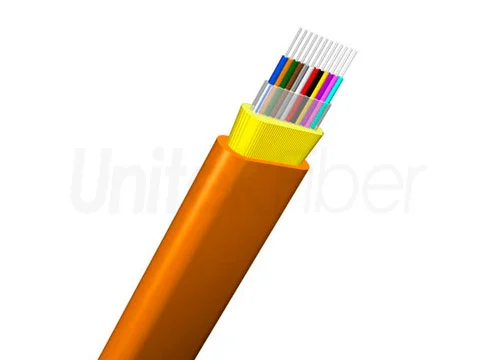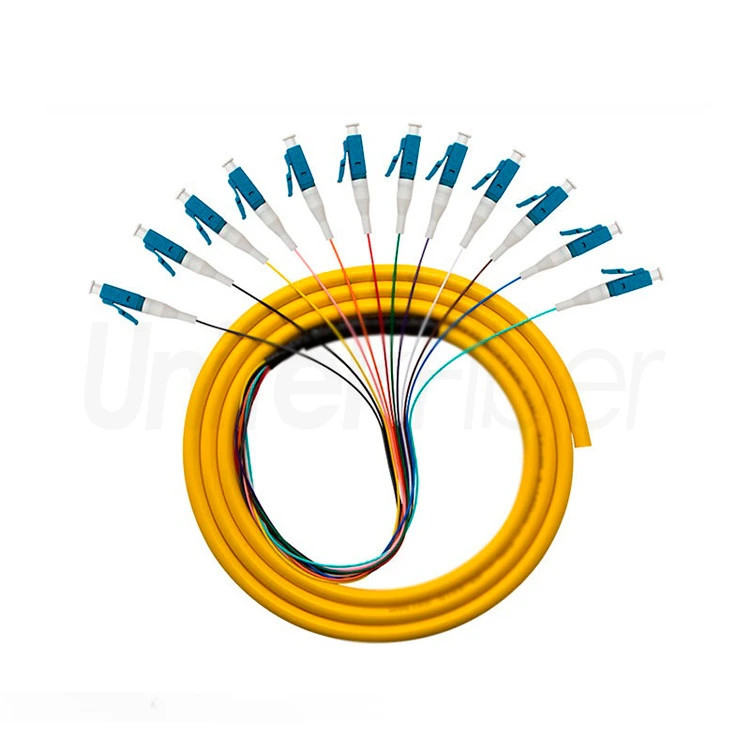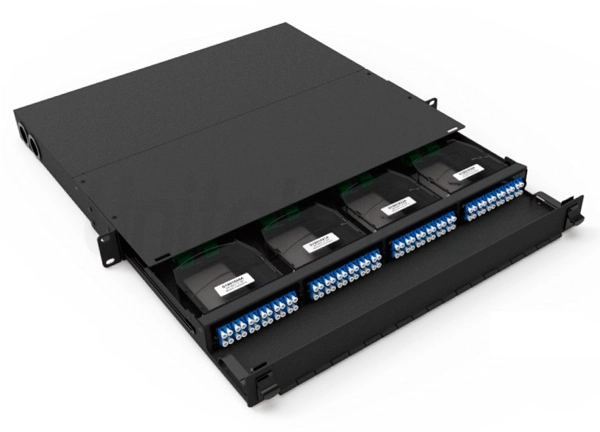

The data center has become the engine of modern life, and the growing network information is transmitted and stored at high speed through the data center. Most of the connection distances inside the data center are short, ranging from a few meters to a few hundred meters. In these short-distance high-speed data communications, multimode optical fibers and optical modules with vertical cavity surface emitting lasers (VCSEL) as the core components have been widely used. Compared with the single-mode transmission scheme, the multi-mode scheme uses a low-cost, low-power laser to achieve fast and efficient coupling between the fiber and the laser. Multi-mode fiber can achieve higher transmission rate or longer transmission distance than copper cable, and lower cost than single-mode fiber system.At present, the internal connection rate of the data center has reached 100 Gbit/s, and 400 Gbit/s is just around the corner. The industry has been developing new types of multimode optical fibers to improve its performance, including broadband multimode optical fiber technology that realizes wavelength division multiplexing in a single optical fiber; and long-wave multimode optical fiber that supports longer transmission distances. In addition, in order to support high-density, miniaturized connections, and improve data center space utilization, heat dissipation efficiency, and cable management efficiency, multimode optical fibers with bending resistance have also been rapidly developed and deployed. This article will combine the technical principles of multimode fiber and the evolution of optical module technology to discuss the development trend of multimode fiber supporting high-speed optical transceivers.
1. The Features and Applications of Multimode Fiber Cables
The development of cloud computing has promoted the development of ultra-large-scale data centers, resulting in a development trend different from traditional enterprise data centers. Whether it is domestic or international, the evolution of server port rates for ultra-large-scale data center users based on cloud computing services is significantly faster than that of traditional enterprise data centers. Traditional enterprises will stably use OM4 Multimode Fiber Cables, and more than 90% of the system link length is less than 100m.
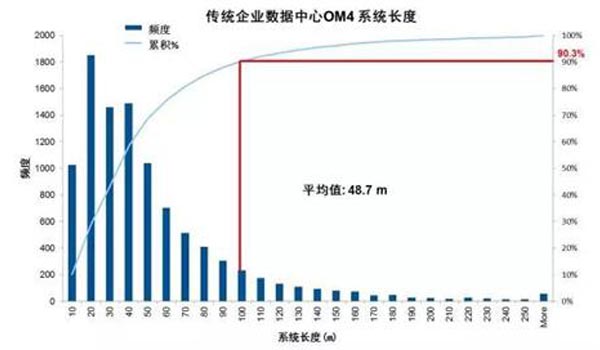
Figure 1 Length distribution of OM4 system in traditional enterprise data center
However, ultra-large-scale data center users choose more singlemode fiber cables, and 70% of the system link length exceeds 100m.
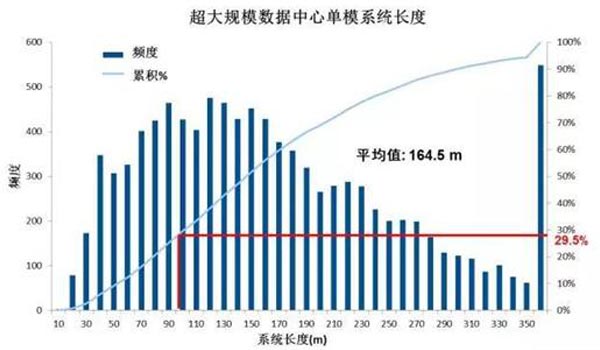
Figure 2 Length distribution of single-mode system in hyperscale data center
The development of ultra-large-scale data centers has increased the utilization rate of single mode fiber cable, but multimode fiber cable still has its unique advantages. These advantages are that the use of lower-cost optical transceiver modules, lower power consumption, and the transmission distance can cover most of the links in the data center, so solutions based on Multimode Fiber Cables and multimode optical modules are still very attractive to customers.
2. The Bandwidth of 850nm Multimode Fiber Cable
Unlike the single mode fiber optic system, the transmission distance and speed of the multimode fiber optic system are limited by the bandwidth of the multimode fiber cables. In order to support the higher transmission distance of the high-speed system, the mode bandwidth of the multimode fiber cable needs to be increased. The design of multimode fiber cable usually adopts a-profile of graded index to reduce the mode group delay and achieve high bandwidth:
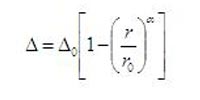
Among them, rO is the core radius, ∆0 is the maximum value of the relative refractive index change of the core, which can be expressed as follows:
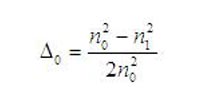
Among them, nO is the central refractive index of the core and n1 is the refractive index of the cladding.
Choosing an appropriate value of a, the mode bandwidth of the multimode fiber optic cables can be optimized within a certain wavelength range. Figure 3 shows the bandwidth distribution of a 50 µm multimode fiber cable when there's 1% change in the a value of the 850 nm wavelength. When the a value of the fiber is at the optimal position, the bandwidth exceeds 13 GHz. km. The figure also reflects that the bandwidth of a multimode fiber cable is very sensitive to the A value. To achieve the maximum bandwidth, A value (core refractive index) needs to be very finely controlled, otherwise various defects in the core profile during the manufacturing process will affect the actual bandwidth of the multimode fiber optic cable.
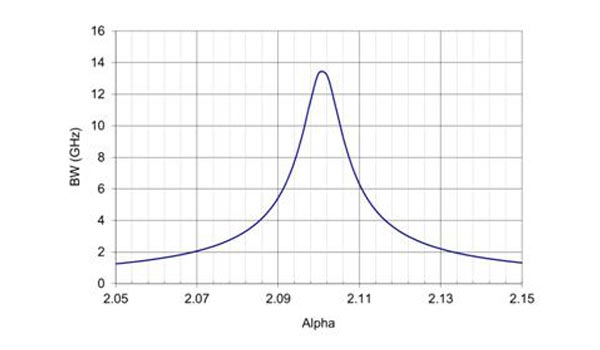
Figure 3 Bandwidth distribution of 50 µm multimode fiber cable when the a value of 850 nm wavelength changes 1%
With the advancement of optical fiber cable design and manufacturing technology, the bandwidth of multimode optical fiber cable has been greatly improved. Table 1 shows different types of standard multi-mode fiber cables. The 62.5 µm multimode fiber optic cable has a higher numerical aperture and a larger core, which can couple the light-emitting diode light source (LED) into the fiber, and supports 2 km at a rate of 10 Mbit/s or even 100 Mbit/s. data transmission. With the development of Ethernet standards and low-cost 850 nm VCSELs, multimode fiber cables with a core diameter of 50µm are more popular in the market. The fiber has lower modal dispersion and higher bandwidth, and the spot size and numerical aperture of the VCSEL is smaller than that of the LED, and the laser can be easily coupled into the 50 µm fiber. By optimizing the fiber manufacturing process and adopting advanced refractive index control technology, the 50 µm multimode fiber cable has developed from OM2 (500 MHz. km) to OM3 (2 000 MHz. km), and now it has developed to OM4 (4 700 MHz. km). ).
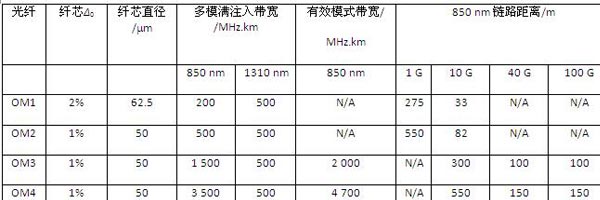
For the multimode fiber system using 850 nm VCSEL, further increasing the bandwidth of the OM4 multimode fiber optic cable will not enable the optical module to transmit longer distances, because the system bandwidth depends on the effective mode bandwidth and dispersion of the fiber optic cables (related to the line width of the VCSEL laser and the fiber wavelength). If the system bandwidth needs to be increased, in addition to the effective mode bandwidth of the optical fiber cable, the dispersion value needs to be optimized. Partial dispersion can be compensated by differential mode delay (DMD) multimode fiber optic cable, or 850 nm VCSEL with a narrower line width or working in the long-wave region with lower dispersion.
The maximum relative refractive index (∆0 )of the core also affects the maximum bandwidth. Because the bandwidth is proportional to 1/2, as shown in Figure 4, when the ∆0 of the core drops from 1% to 0.75%, the bandwidth will double. But reducing the core’s ∆0 will increase the bending loss, and it is necessary to optimize the fiber structure design to improve its bending performance.
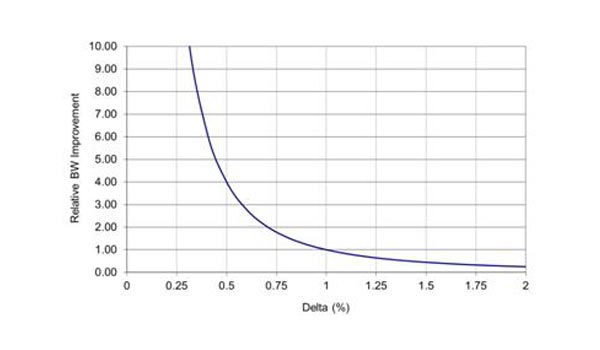
Figure 4 The bandwidth of a multimode fiber varies with the relative refractive index of the core
3. The Bend-insensitive multimode fiber cables
In data center applications, the use of bend-insensitive multimode optical fiber cables is becoming more and more widely used. It can optimize the design of optical cables, hardware and equipment to save more space, have better cooling efficiency, and more convenient connections and cables management. Figure 5 shows the refractive index profile design of a bend-insensitive multimode fiber optic cable. The core is graded index and the cladding has a low index groove. The groove reduces the optical power in the cladding, can prevent the leakage of the optical signal, thereby improving the bending performance of the optical fiber cables. Optimizing the core and groove dimensions during optical fiber cable design to achieve a balance between bending performance and compatibility with standard multimode fiber optic cables. Through reasonable design of core and groove, multimode fiber cable can achieve OM4 level high bandwidth and low bending loss. Figure 6 shows the comparison of the bending loss measured at 850 nm. The macro bending loss of the bend-insensitive multimode fiber cable is more than 10 times lower than that of the conventional standard multimode fiber cable.
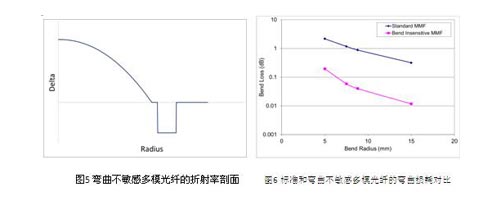
4. The development of next-generation Multimode Fiber Cables
At present, the highest mode bandwidth of 850nm multimode fiber cable is OM4 fiber, which can support 100 meters transmission of 100G system. If the mode bandwidth is further increased, more precise control of the refractive index distribution is required, which places higher requirements on the production process and has a greater impact on the yield of the product. On the other hand, the total system bandwidth is limited by the two factors of fiber mode bandwidth and fiber dispersion. A single increase in mode bandwidth has limited improvement in system transmission performance. This is because it is affected by the line width of the currently used VCSELs, multimode fiber cable dispersion has become the most important limiting factor affecting the rate and link distance. If you want to increase the system transmission rate or transmission distance, you can usually use two methods: use single mode fiber cable and single mode laser; or still use multi-mode fiber cable, but use a narrower linewidth laser to limit the incident mode of multi-mode fiber cables. The disadvantages of these two methods are that more expensive lasers are required, and the fiber coupling process requires higher alignment accuracy, which will lead to higher optical module costs and connection costs . Therefore, it is necessary to improve multimode fiber cable technology to achieve higher capacity and longer distance transmission. The research on the new multimode fiber cable is mainly concentrated in the following directions.
4.1 The Long-wave Multimode Fiber Cable
The long-wave optimized high-bandwidth multimode fiber cable (980 nm/1 060 nm or 1 310 nm) combined with a light source (such as a long-wave VCSEL) is a feasible solution for achieving long-distance and high-speed transmission. The long-wave multimode fiber system retains the advantages of low coupling loss and easy alignment of conventional 850 nm multimode fiber cable, and the fiberglass has lower dispersion and attenuation values. As shown in Figure 7, the dispersion and loss of the fiberglass vary with wavelength. At 1060 nm, the dispersion and loss are reduced by half compared to 850 nm. At 1310 nm, the dispersion is almost zero, and the loss is only 20% of 850 nm. The low-loss and low-dispersion multimode fiber system working in the long-wave region can achieve higher speed and longer transmission distance. A series of experimental results in recent years have also verified this conclusion: 1310nm multimode fiber cable combined with 1310 nm silicon optical module has achieved a transmission distance of more than 820m, and the combination of a 1060nm multimode fiber cable and a 1060nm VCSEL laser has achieved a transmission of more than 500m (the above experiments are all at 100G speed).
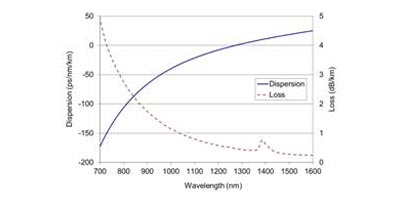
Figure 7 Dispersion and loss of multimode fiber cable
4.2 Broadband Multimode Fiber Cables
The 40G/100G standard that based on IEEE802.3ba, the transmission of multimode optical fiber cable 40G adopts 4*10Gbp=40Gbps for each pair of optical fiber cables to support 10Gbps. It requires 4 optical fiber cables to transmit and receive,total 8 core fiber cable. 100G uses 4 optical fiber cables each to send and receive 4*25Gbps=100G, using 8 core optical fiber cables in total. The transmission rate of 400 Gb/s requires 16 pairs of 32 core fiber cables, which takes up a lot of optical fiber resources. The industry is exploring the use of multi-wavelength multiplexing to reduce the number of optical fibers used.
There are currently two products based on multi-wavelength multiplexing technology on the market. One is BiDi (Bi-direction) technology. As shown in the figure below (take 40G as an example), the optical module has two 20 Gbps bidirectional channels, and each fiber has the function of sending and receiving (multimode fiber cable supports 850nm and 900nm wavelength), and finally realized 40G transmission two optical fiber cables, and there is no need to install additional MTP jumpers. It is worth noting that since each fiber of the BiDi fiber media converter both transmits and receives signals, it does not support the port branch function. Another technology is short wavelength division multiplexing (SWDM) technology. Similar to BiDi, SWDM only needs a two-core LC duplex connection. The difference is that SWDM needs to work on 4 different wavelengths between 850nm and 940nm. One fiber is used to transmit signals and the other is used to receive signals.
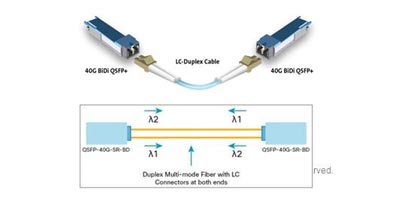
Figure 8 40GBiDi optical module and optical path diagram
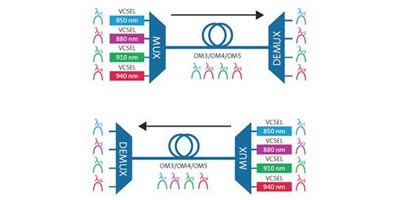
Figure 9 light path diagram of SWDM module
Conventional fiber bandwidth of OM3/OM4 is usually optimized only for 850 nm. In order to support the working mode of SWDM optical modules, it is necessary to quantify the fiber performance at 940 nm. Therefore, the Telecommunications Industry Association (TIA) created a working group in 2014 to compile“wideband multimode fiber cable (WB MMF)”related guidelines to support SWDM transmission. The TIA-492AAAE standard of WB MMF was released in June 2016. Broadband multimode fiber cable is actually an OM4 fiber with extended performance, because broadband multimode fiber still has to meet the bandwidth requirement of OM4 fiber with EMB≥4700 MHz·km at 850 nm wavelength, and also stipulates EMB at 953 nm wavelength meet≥2470 MHz·km. In October 2016, the International Standards Organization named the broadband multimode fiber OM5 fiber.

Table 2: Transmission distance (m) of different fiber types and fiber media converter types
Note 1: The distance represents the parameter published by the fiber media converter manufacturer; some switch suppliers provide different parameters.
Note 2: Projects marked with * can achieve longer transmission distances and use some connection solutions that exist on the market.
Table 2 compares the transmission distances of different optical fibers (OM3/4/5) matching different optical modules. BiDi and SWDM using OM4 fiber can transmit 150m and 350m respectively at 40G, and the 100G module OM5 can support 150m transmission of BiDi and SWDM optical modules. In contrast, OM3 and OM4 have transmission distances of 70m and 100m, but this distance is sufficient for most application scenarios of multi-mode solutions. Figure 10 lists the optical transcever module solutions based on OM4 fiber at various speeds at 100 meters. OM4 can support a variety of optical module solutions from 40G to 400G (such as 100G SR4, 100GBiDi, 400GSR4.2, 400GSR8, etc.) . In actual applications, the appropriate multimode fiber should be selected in combination with the application scenario. For example, in scenarios where SR4/eSR4 optical modules are required for port branching, the performance of OM5 and OM4 are basically the same, so OM4 is a more cost-effective solution. For links with a transmission distance of more than 100 m at a rate of 100G or above, the OM5/SWDM combination can show its advantages in long-distance transmission.
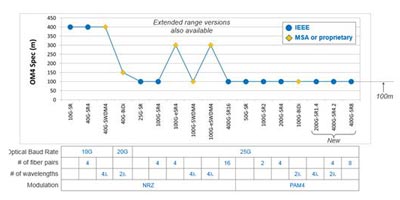
Figure 10 40/100G/400G solution based on OM4 with the transmission of 100m
UnitekFiber is a professional optical communication equipment manufacturer integrating R&D, production, sales and service. The products involve fiber optical patch panels, indoor/outdoor optical cables, fiber cable assemblies, optical transceivers and other optical communication products. Wht strong enterprise strength, trustworthiness, contract abiding, and product quality assurance, UnitekFiber has won the trust from customers. If you need more information or support on fiber optical products, please don’t hesitate to contact us sales@unitekfiber.com, we will try our best to support you.

